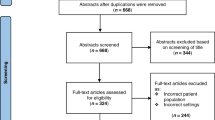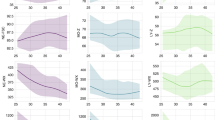Abstract
Objective
We evaluated the association between early-onset sepsis and neonatal encephalopathy in a low-middle-income setting.
Methods
We undertook a retrospective study in newborns with gestational age ≥35 weeks and/or birth weight ≥2500 grams, diagnosed with neonatal encephalopathy. Early-onset sepsis was defined as culture-confirmed sepsis or probable sepsis.
Results
Of 10,182 hospitalised newborns, 1027 (10.1%) were diagnosed with neonatal encephalopathy, of whom 52 (5.1%) had culture-confirmed and 129 (12.5%) probable sepsis. The case fatality rate for culture-confirmed sepsis associated neonatal encephalopathy was threefold higher compared to neonatal encephalopathy without sepsis (30.8% vs. 10.5%, p < 0.001). Predictors of mortality for culture-confirmed sepsis associated neonatal encephalopathy included severe neonatal encephalopathy (aOR 6.51, 95%CI: 1.03–41.44) and seizures (aOR 10.64, 95%CI: 1.05–107.39).
Conclusion
In this setting, 5% of neonatal encephalopathy cases was associated with culture-confirmed sepsis and a high case fatality rate.
This is a preview of subscription content, access via your institution
Access options
Subscribe to this journal
Receive 12 print issues and online access
$259.00 per year
only $21.58 per issue
Buy this article
- Purchase on SpringerLink
- Instant access to full article PDF
Prices may be subject to local taxes which are calculated during checkout


Similar content being viewed by others
References
Liu L, Oza S, Hogan D, Chu Y, Perin J, Zhu J, et al. Global, regional, and national causes of under-5 mortality in 2000-15: an updated systematic analysis with implications for the Sustainable Development Goals. Lancet 2016;388:3027–35. 17
Madhi SA, Pathirana J, Baillie V, Izu A, Bassat Q, Blau DM, et al. Unraveling Specific Causes of Neonatal Mortality Using Minimally Invasive Tissue Sampling: an observational study. Clin Infect Dis. 2019;69:S351–S360. 9Suppl 4
Dorrington RE, Bradshaw D, Laubscher R, Nannan N. Rapid mortality surveillance report 2016. Cape Town: South African Medical Research Council; 2018.
American College of Obstetricians and Gynecologists’ Task Force on Neonatal Encephalopathy. Executive summary: Neonatal encephalopathy and neurologic outcome, second edition. Pediatrics. 2014;133:e1482–8.
Kurinczuk JJ, White-Koning M, Badawi N. Epidemiology of neonatal encephalopathy and hypoxic-ischaemic encephalopathy. Early Hum Dev. 2010;86:329–38.
Lawn JE, Cousens S, Zupan J. Neonatal Survival 14 million neonatal deaths: When? Where?Why? Lancet. 2005;365:891–900.
Bruckmann EK, Velaphi S. Intrapartum asphyxia and hypoxic ischaemic encephalopathy in a public hospital: Incidence and predictors of poor outcome. S Afr Med J. 2015;105:298–303.
Tann CJ, Nkurunziza P, Nakakeeto M, Oweka J, Kurinczuk JJ, Were J, et al. Prevalence of bloodstream pathogens is higher in neonatal encephalopathy cases vs. controls using a novel panel of real-time PCR assays. PLoS ONE 2014;9:e97259.
Badawi N, Kurinczuk JJ, Keogh JM, Alessandri LM, O’Sullivan F, Burton PR, et al. Antepartum risk factors for newborn encephalopathy: the Western Australian case-control study. BMJ 1998;317:1549–53.
Ellis M, Manandhar N, Manandhar DS, Costello AM. Risk factors for neonatal encephalopathy in Kathmandu, Nepal, a developing country: unmatched case-control study. BMJ 2000;320:1229–36.
Jenster M, Bonifacio SL, Ruel T, Rogers EE, Tam EW, Partridge JC, et al. Maternal or neonatal infection: Association with neonatal encephalopathy outcomes. Pediatr Res. 2014;76:93–99.
Nelson KB, Penn AA. Is infection a factor in neonatal encephalopathy? Arch Dis Child Fetal Neonatal Ed. 2015;100:F8–F10.
Tann CJ, Nakakeeto M, Willey BA, Sewegaba M, Webb EL, Oke I, et al. Perinatal risk factors for neonatal encephalopathy: an unmatched case-control study. Arch Dis Child Fetal Neonatal Ed. 2018;103:F250–F256.
Pauliah SS, Shankaran S, Wade A, Cady EB, Thayyil S. Therapeutic Hypothermia for Neonatal Encephalopathy in Low- and Middle-Income Countries: A Systematic Review and Meta-Analysis. PLoS ONE. 2013;8:e58834.
Hagberg H, Mallard C, Ferriero DM, Vannucci SJ, Levison SW, Vexler ZS, et al. The role of inflammation in perinatal brain injury. Nat Rev Neurol. 2015;11:192–208.
Fleiss B, Tann CJ, Degos V, Sigaut S, Van Steenwinckel J, Schang AL, et al. Inflammation-induced sensitization of the brain in term infants. Dev Med Child Neurol. 2015;57:17–28. S3
Peebles DM, Wyatt JS. Synergy between antenatal exposure to infection and intrapartum events in causation of perinatal brain injury at term. BJOG: Int J Obstet Gynaecol. 2002;109:737–9.
Tann CJ, Martinello KA, Sadoo S, Lawn JE, Seale AC, Vega-Poblete M, et al. Neonatal Encephalopathy with Group B Streptococcal Disease Worldwide: Systematic Review, Investigator Group Datasets, and Meta-analysis. Clin Infect Dis. 2017;6:S173–S189. 65 (suppl_2)
Leatt A, Shung-King M, Monson J. Healing inequalities: The free health care policy. South African Child Gauge. 2006;51–6.
Sarnat HB, Sarnat M. Neonatal encephalopathy following fetal distress: a clinical and electroencephalographic study. Arch Neurol. 1976;33:696–705.
Azzopardi D, Brocklehurst P, Edwards D, Halliday H, Levene M, Thoresen M, et al. The TOBY study. Whole body hypothermia for the treatment of perinatal asphyxial encephalopathy: a randomised controlled trial. BMC Pediatr. 2008;8:17.
Polin RA. Management of Neonates With Suspected or Proven Early-Onset Bacterial Sepsis. Pediatrics 2012;129:1006–15.
Sanka S, Muniraman H, Gardner D, Pawaletz A, Jennings C, Vayalakkad A, et al. 1100 C-Reactive Protein Concentrations in Neonates with Hypoxic-Ischaemic Encephalopathy and Effect of Total Body Hypothermia. Arch Dis Child. 2012;97:A315.
Xanthou M, Fotopoulos S, Mouchtouri A, Lipsou N, Zika I, Sarafidou J. Inflammatory mediators in perinatal asphyxia and infection. Acta Paediatr Suppl. 2002;91:92–7.
Shang Y, Mu L, Guo X, Li Y, Wang L, Yang W, et al. Clinical significance of interleukin-6, tumor necrosis factor-α and high-sensitivity C-reactive protein in neonates with hypoxic-ischemic encephalopathy. Exp Ther Med. 2014;8:1259–62.
Rath S, Narasimhan R, Lumsden C. C-reactive protein (CRP) responses in neonates with hypoxic ischaemic encephalopathy. Arch Dis Child Fetal Neonatal Ed. 2014;99:F172.
Chakkarapani E, Davis J, Thoresen M. Therapeutic hypothermia delays the C-reactive protein response and suppresses white blood cell and platelet count in infants with neonatal encephalopathy. Arch Dis Child Fetal Neonatal Ed. 2014;99:F458–63.
Hofer N, Zacharias E, Müller W, Resch B. An update on the use of C-reactive protein in early-Onset neonatal sepsis: current insights and new tasks. Neonatology 2012;102:25–36.
Hakobyan M, Dijkman KP, Laroche S, Naulaers G, Rijken M, Steiner K, et al. Outcome of Infants with Therapeutic Hypothermia after Perinatal Asphyxia and Early-Onset Sepsis. Neonatology. 2019;115:127–33.
Jacobs SE, Berg M, Hunt R, Tarnow-Mordi WO, Inder TE, Davis PG. Cooling for newborns with hypoxic ischaemic encephalopathy. Cochrane Database Syst Rev Art. 2013;3–5.
Velaphi SC, Westercamp M, Moleleki M, Pondo T, Dangor Z, Wolter N, et al. Surveillance for incidence and etiology of early-onset neonatal sepsis in Soweto, South Africa. PLoS ONE. 2019;14:e0214077.
Le Doare K, O’Driscoll M, Turner K, Seedat F, Russell NJ, Seale AC, et al. Intrapartum Antibiotic Chemoprophylaxis Policies for the Prevention of Group B Streptococcal Disease Worldwide: Systematic Review. Clin Infect Dis. 2017;65:S143–51.
Price CA, Green-Thompson L, Mammen VG, Madhi SA, Lala SG, Dangor Z. Knowledge gaps among South African healthcare providers regarding the prevention of neonatal group B streptococcal disease. PLoS ONE. 2018;13:e0205157.
Falck M, Osredkar D, Maes E, Flatebø T, Wood TR, Sabir H, et al. Hypothermic Neuronal Rescue from Infection-Sensitised Hypoxic-Ischaemic Brain Injury Is Pathogen Dependent. Dev Neurosci. 2017;39:238–47.
Vekemans J, Moorthy V, Friede M, Alderson MR, Sobanjo-Ter Meulen A, Baker CJ, et al. Maternal immunization against Group B streptococcus: World Health Organization research and development technological roadmap and preferred product characteristics. Vaccine 2019;37:7391–3.
Acknowledgements
We are thankful to the VIDA and CHBAH Neonatal Department for their help and access to databases. The electronic database upon which this study was partly based, is funded and managed by VIDA on behalf of the Department of Paediatrics at CHBAH.
Funding
SAM is funded in part by National Research Foundation/ Department of Science and Technology: South African Research Chair Initiative in Vaccine Preventable Diseases and South Africa Medical Research Council. ZD is in part funded by the Carnegie Corporation of New York (Grant number B8749). The funders had no role in study design, data collection and analysis, decision to publish, or preparation of the paper.
Author information
Authors and Affiliations
Contributions
KPC, FN, SAM and ZD conceptualised and designed the study, designed the data collection instruments, carried out analyses, drafted the initial paper, and reviewed and revised the paper. SCV and CJT assisted with the study design and analysis, and critically reviewed the paper for important intellectual content. FS, AI and SGL designed the data collection instruments, collected data, and reviewed and revised the paper. FS, AI and SAM maintain the database used in the study, and critically reviewed the paper for important intellectual content. All authors approved the final paper as submitted and agree to be accountable for all aspects of the work.
Corresponding author
Ethics declarations
Competing interests
The authors declare no competing interests.
Additional information
Publisher’s note Springer Nature remains neutral with regard to jurisdictional claims in published maps and institutional affiliations.
Supplementary information
41372_2021_1290_MOESM2_ESM.docx
Supplementary Table 2: Clinical and laboratory characteristics of neonates with culture-confirmed sepsis associated neonatal encephalopathy.
41372_2021_1290_MOESM3_ESM.docx
Supplementary Table 3: Clinical and laboratory characteristics of neonates with probable sepsis associated neonatal encephalopathy
41372_2021_1290_MOESM4_ESM.docx
Supplementary Table 4: Clinical and laboratory characteristics of neonates with overall sepsis (confirmed + probable) associated neonatal encephalopathy
41372_2021_1290_MOESM5_ESM.docx
Supplementary Table 5: Prevalence and incidence estimates of neonates with neonatal encephalopathy (NE) stratified by early-onset sepsis (EOS) and organisms cultured
41372_2021_1290_MOESM6_ESM.docx
Supplementary Table 6: Predictors of mortality in neonates with overall (confirmed + probable) sepsis associated neonatal encephalopathy
Rights and permissions
About this article
Cite this article
Car, K.P., Nakwa, F., Solomon, F. et al. The association between early-onset sepsis and neonatal encephalopathy. J Perinatol 42, 354–358 (2022). https://doi.org/10.1038/s41372-021-01290-5
Received:
Revised:
Accepted:
Published:
Issue date:
DOI: https://doi.org/10.1038/s41372-021-01290-5
This article is cited by
-
Association Between Monocyte Cell DNA Methylation and Risk of Sepsis: Insights from Bioinformatics
Bratislava Medical Journal (2025)
-
Risk factors for infection and outcomes in infants with neonatal encephalopathy: a cohort study
Pediatric Research (2024)
-
Characteristics and outcomes of neonates with intrapartum asphyxia managed with therapeutic hypothermia in a public tertiary hospital in South Africa
BMC Pediatrics (2023)



